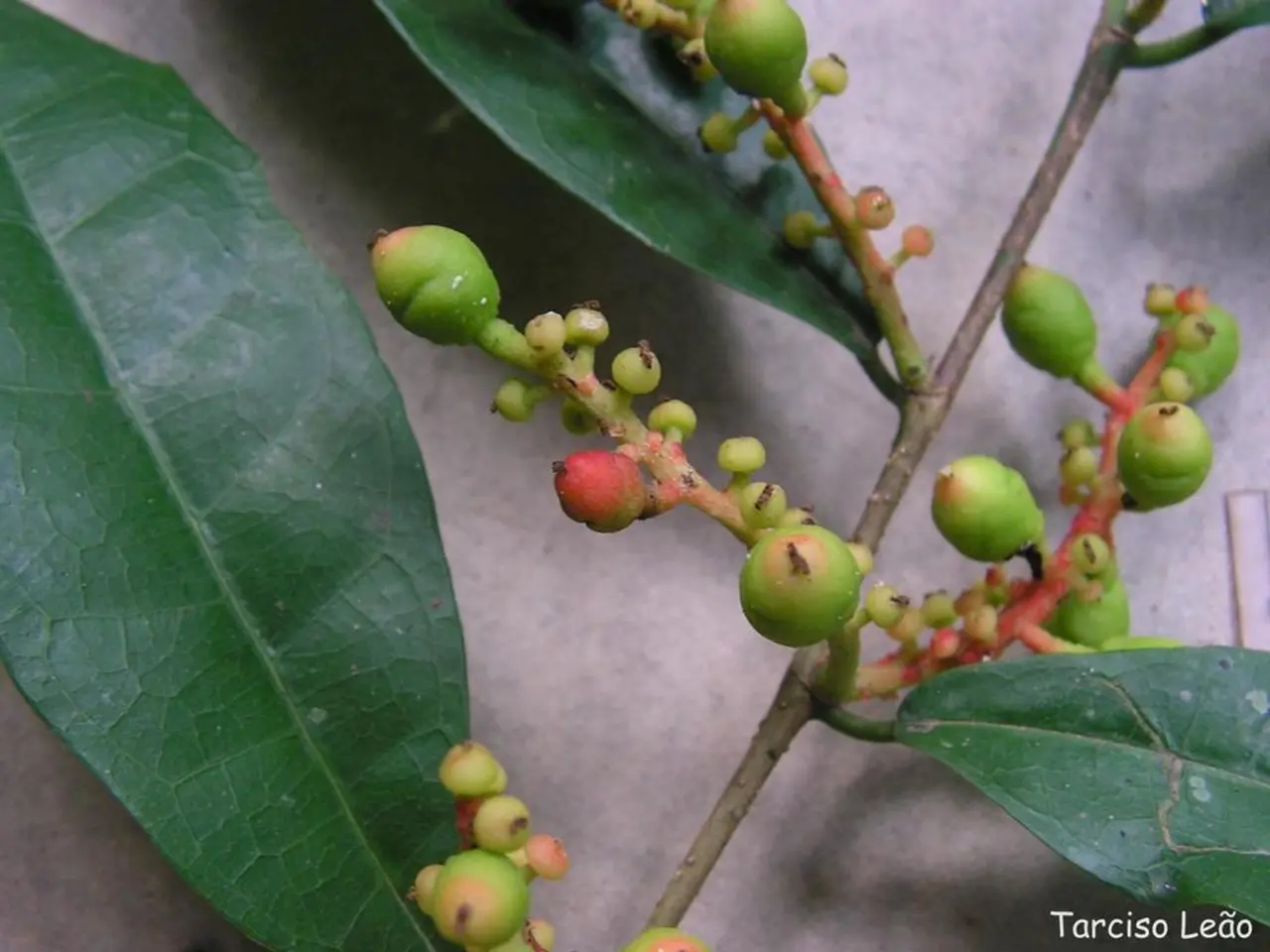Training and shaping a fig tree: Practical techniques for cultivation
In the UK, growing fig trees is a delightful endeavour, and with proper care, these fruit-bearing beauties can thrive. Here's a guide to pruning and caring for fig trees, tailored to the British climate.
Firstly, it's essential to understand that cutting the top off a fig tree encourages more growth. This practice is particularly beneficial for fan-trained fig trees, which are trained against south-facing walls to improve warmth and ripening.
For fan-trained fig trees, pruning involves both winter and summer steps. In winter, remove weak, crossing, and frost-damaged branches, as well as overcrowded growth, to allow light inside and maintain a manageable size. During summer, pinch out the tips of vigorous shoots to encourage fruiting side shoots.
Bush-shaped fig trees require similar pruning techniques, with an emphasis on winter pruning to remove unproductive or old wood to promote early breba crop fruiting. Pruning focuses on maintaining good light and air circulation inside the bush and managing size. Summer tip pinching is also beneficial to encourage fruiting laterals.
A typical pruning schedule for fig trees in the UK consists of two main periods: the dormant season (winter) and summer. In the winter, remove dead, damaged, frost-damaged, or crossing branches, cut back overcrowded growth, and trim old, unproductive wood to boost early crop development. This is the main pruning time to structure the tree.
Summer pruning involves pinching out the tips of new vigorous shoots when they have grown 5-6 leaves to encourage fruiting side shoots and control size.
In spring, prune any dead, crossing, or weak branches back, leaving a 2.5cm stub to promote the growth of a new shoot. Tie in new shoots, keeping to the fan shape, and remove a couple of old branches on mature fig plants, cutting back to around 5cm long.
Caring for fig trees also includes other considerations. For instance, restraining the roots can help control their growth, and fig trees can be grown in large containers or sunk in large pots to restrict their size.
Fig trees are hardy plants, producing two crops in the UK, one in late summer and one in late spring. To protect fig trees from cold regions, cover them with horticultural fleece, pegged over them to prevent physical damage but allow air flow and prevent rot.
The best place to plant figs is against a sunny wall, and the planting hole can be lined with paving slabs and rubble for improved drainage. When training a fig tree as a bush or standard, aim to create a well-balanced bowl shape.
Remember, the best time to prune figs is after all danger of frost has passed but before new growth starts. Prune a third of the new shoots that grew the previous year, focusing on weak or spindly shoots. Shorten all sideshoots to five leaves from the base during early summer pruning.
With these tips, you're well on your way to enjoying a bountiful harvest of delicious figs in your UK garden. Happy gardening!
References:
- RHS - Pruning Figs
- Garden Organic - Fig Tree Care
- Gardening Express - Pruning Fig Trees
- BBC Gardeners' World - Pruning Fig Trees
- Garden Myths - Pruning Fig Trees
Maintaining a fig tree in your home-and-garden, especially with the British climate in mind, can lead to a satisfying lifestyle of gardening and delicious fruit harvest. Fan-trained fig trees, when pruned appropriately, can showcase a captivating display against south-facing walls, combining aesthetics with functionality for warming and ripening.




